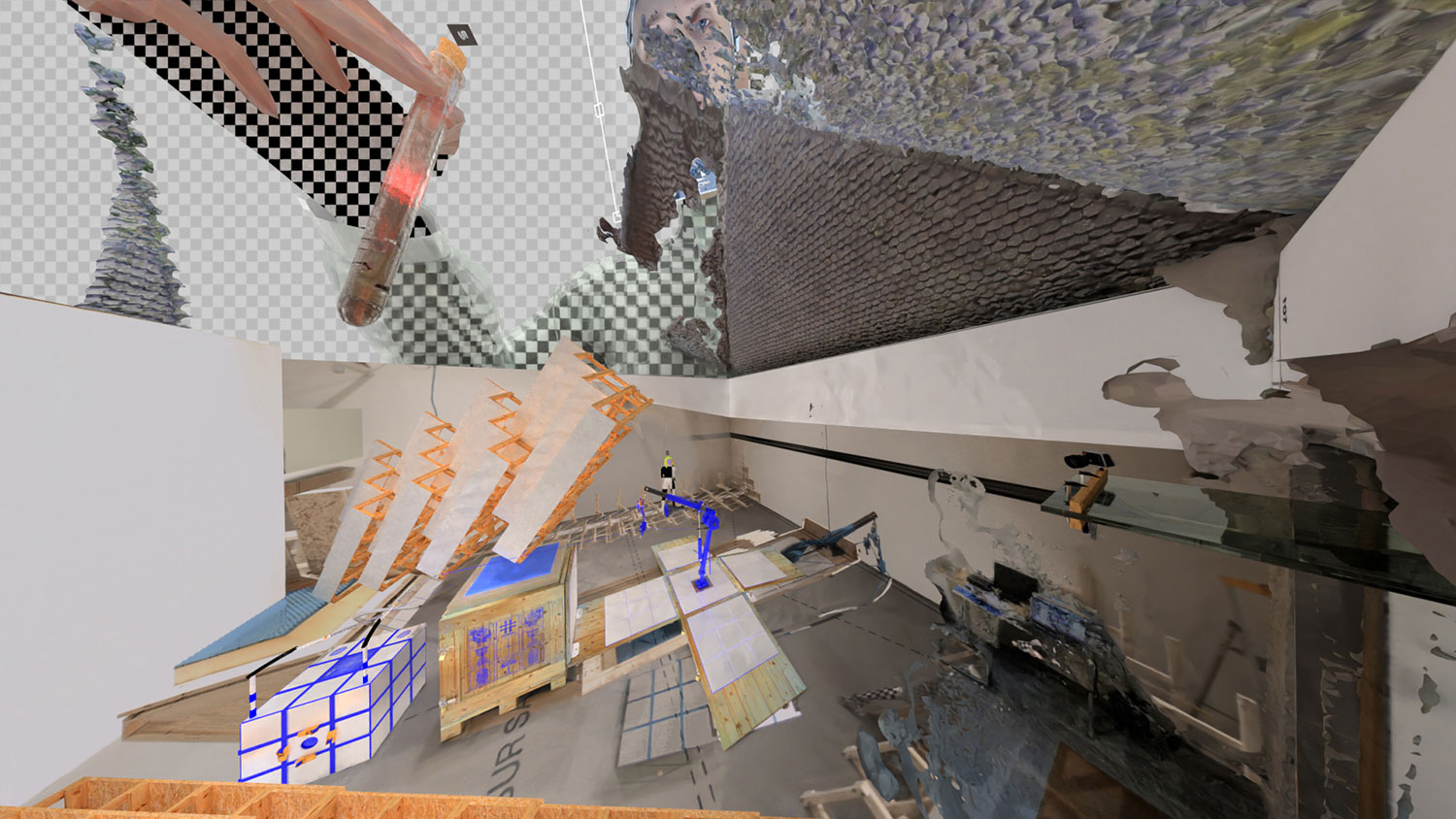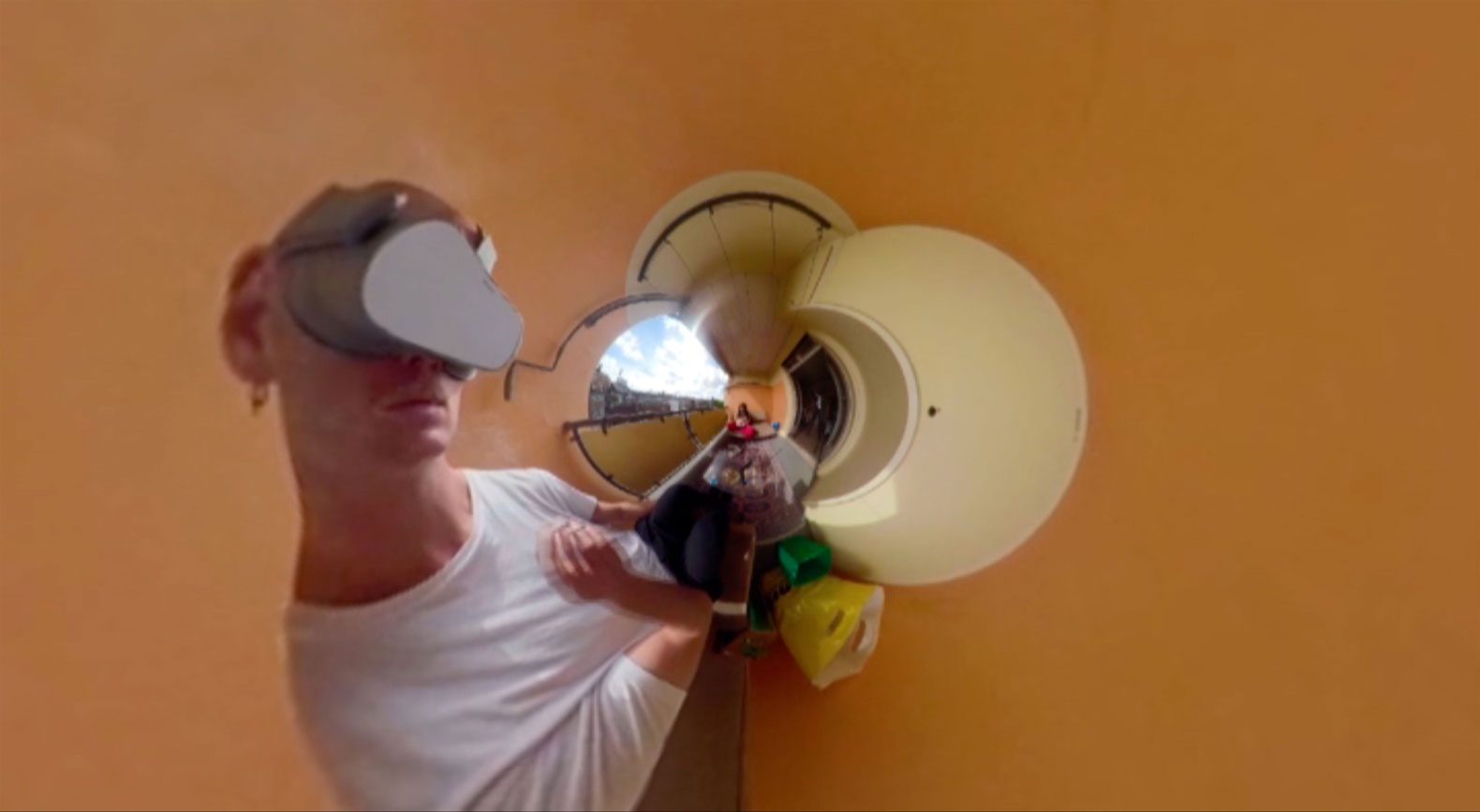ART CITIES:Basel-Regionale 21 Expanded Video Works
 The Regionale Art Exhibition is a cross-border project that is unique in this form. Nineteen institutions from three countries (France, Germany, and Switzerland) each show artistic positions from the Basel region and the trinational area (Northwestern Switzerland, South Baden, Alsace) at the end of the year. The Regionale exhibition launched in 2000/01, serves to promote and intensify the understanding between artists, cultural workers and institutions on a trinational level.
The Regionale Art Exhibition is a cross-border project that is unique in this form. Nineteen institutions from three countries (France, Germany, and Switzerland) each show artistic positions from the Basel region and the trinational area (Northwestern Switzerland, South Baden, Alsace) at the end of the year. The Regionale exhibition launched in 2000/01, serves to promote and intensify the understanding between artists, cultural workers and institutions on a trinational level.
By Dimitris Lempesis
Photo: HeK Archive
HeK’s 2020 Regionale exhibition, “Regionale 21 – Expanded Video Works”, focuses on the artistic use of moving images with a selection of videos, films and animations. The presented works share a formal and experimental creativity in their use of motion graphics software and video equipment. While the exhibition pays tribute to the diversity and wealth of new approaches offered by video media, it is the themes addressed in the works that offer a valuable contribution to the critical and aesthetic discourse in relation to our media culture. Video emerged as a new artistic medium in the mid-1960s. The language of video art rapidly developed in its complexity and diversity, especially with affordable portable video recording systems becoming widely available, spearheaded by Sony’s Portapak in the late 1960s. Today, video art has become essential to the practices of contemporary artists, and encompasses a multitude of new tools and technologies, among them: Virtual Reality (VR), synchronized multi-projection, video installations as well as a wide variety of digital software that enables experimentation with different means of creating and incorporating moving images. Video art has developed unwaveringly in recent years and will continue to do so.
A number of the exhibition’s participating artists employ 3D technologies, video games, VR, found footage and tutorials to create introspective and surreal-looking works. Johanna Mangold investigates states of consciousness related to sleep by converting her notes and illustrations from a logbook of lucid dreams into a stream of VR images. Katrin Niedermeier’s animation “h.o.m.e.” takes a feminist perspective of the Covid-19 lockdown and the resulting solitude of working women. Stereotypical avatars in enclosed boxes of a virtual environment not only portray these women’s isolation, but also mirror sexualisation that commonly enshrouds female characters on the Internet. Using a computer-game program, Agathe Siffert designed five virtual landscapes, which she converted into raw data with audio software and finally translated into sound for the soundscapes of” Mapping Tone”. The video composition of landscapes and their audio tracks renders them simultaneously visible and audible, intensifying the connection between image and sound. With his multi-channel installation “Gilles Well’s adventures”, Kevin Senant creates a suspenseful story about the protagonist’s mysterious disappearance. Viewers are given the opportunity to investigate what happened by assembling pieces of the puzzle of information from the various videos presented in the exhibition. The theme of family and social ties, and how they are vitalized or disrupted by means of social networks and digital technologies, is in the spotlight of videos that explore the friction between documentation and fiction. Anuk Jovović, answers her need to look at her family history with an elaborate video project created with Pavle Jovović, titled “Form and Abandon”, which has both an archaic and futuristic appeal. Drawing on the symbolism of Serbian mythologies and traditions, the drama is highlighted by the use of digital tools in post-production, which lend the film its characteristic features. Lea Rüegg’s “How to be intimate with a ghost” investigates human interaction with and communication via digital media, revealing different forms and conceptions of reality that develop in a digitalized society. On a flat screen, she presents viewers with images from 360-degree cameras, which are normally used to capture VR environments, thereby developing interesting new forms. With “Chez Nous”, Oh Eun Lee presents a personal and touching video work where photographs alternate with video clips to tell the story of two generations crossing paths. While her son is learning to walk, the artist’s mother faces the loss of her mobility – impressively illustrating the parallel developments of learning and unlearning. Other works revolve around digital economy and research, with a particular focus on their inherent languages and terminologies. In “A Floating Notice”, the artists’ collective Dimension Émotionnelle stages a performance with emoticons and other stylized figures familiar from the instructions for household appliances and consumer goods. They are brought to life as workers waiting eagerly to be hired, who then find themselves locked up in an impersonal space repeating phrases from instruction manuals. A similar theme also features in “Revitalise” by Alexandra Navratil, a video composed of a list of definitional fragments extracted from the international ergonomic standard specifications. The flow of words is occasionally interrupted by animation resembling illustrations of radiation, the universe and galaxies or computer screensavers. This free association of ideas related to thermodynamics, cosmological aesthetics and ergonomics draws attention to the stream of development from the industrial to the digital age. Paul Jacques Yves Guilbert’s video work follows the construction of a theater and auditorium, accompanied by soothing songs and a chime. References, such as to test tubes used in chemistry, draw tongue-in-cheek attention to the elitist language of art and science. Jésus s.Baptista’s multimedia installation serves as a connecting element within the exhibition. His play of light and sound controlled by artificial intelligence exemplifies how video can also surface beyond a screen and embody a physical space. As a radical example of an “expanded video work” Baptista’s installation completes the presentation of new forms of contemporary video production that transcend the traditional boundaries of cinematic language.
Participating Artists: Jésus s.Baptista, Dimension Émotionnelle, Paul Jacques Yves Guilbert, Pavle & Anuk Jovović, Oh Eun Lee, Johanna Mangold, Alexandra Navratil, Katrin Niedermeier, Lea Rüegg, Kevin Senant, Agathe Siffert.
Photo: Johanna Mangold, you could throw a kaenga, 2020, Virtual Reality, Video 2020, © Johanna Mangold, Courtesy the artist and HeK-Haus der elektronischen Künste Basel
Info: Curator: Boris Magrini, HeK-Haus der elektronischen Künste Basel, Freilager-Platz 9, Münchenstein / Basel, Duration: 28/11/2020-3/1/2021, Days & Hours: Wed-Sun 12:00-18:00, www.hek.ch


